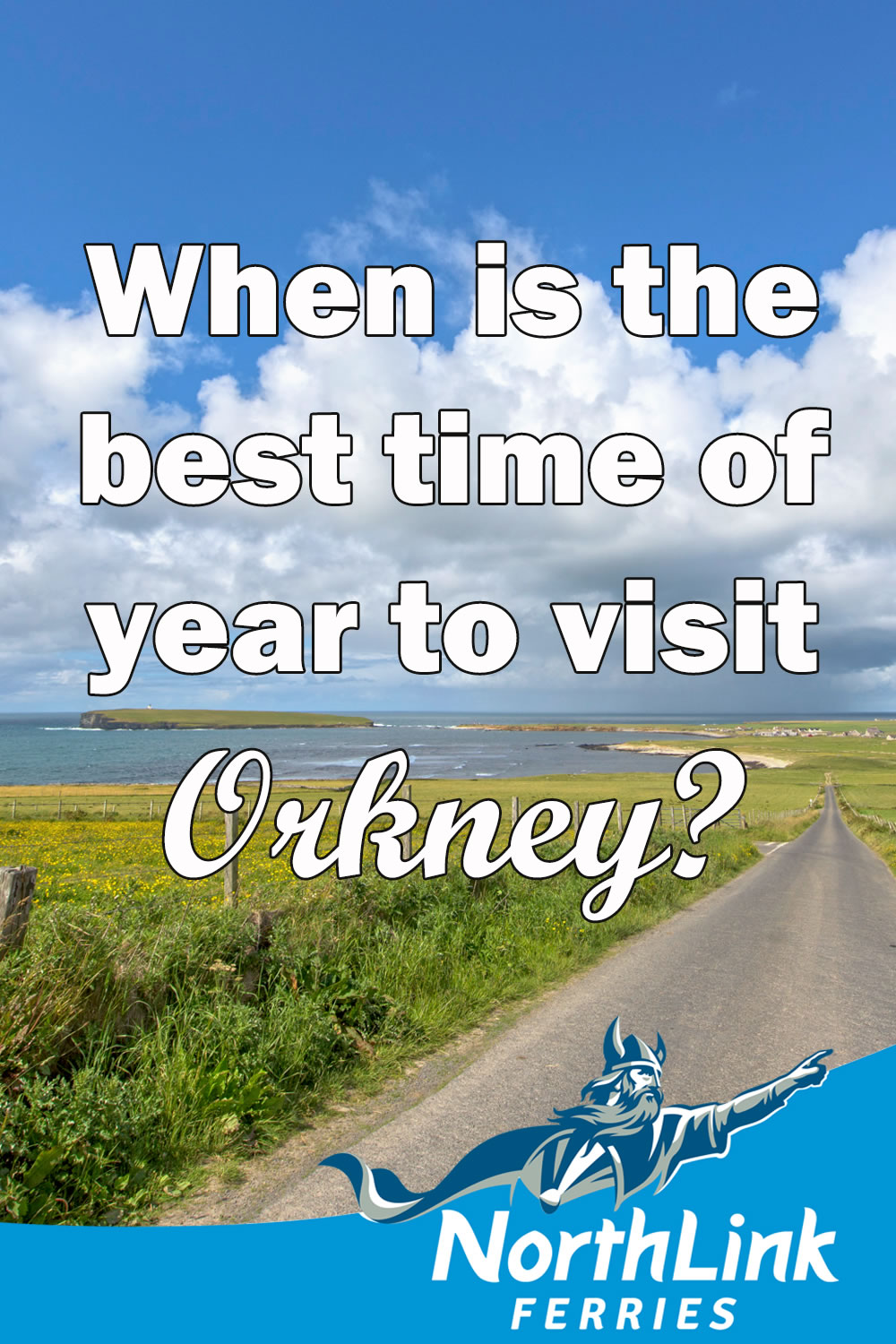When is the best time of year to visit Orkney?
We are often asked which month is best to visit Orkney. The answer is all of them – for many different reasons. With regards weather, Orkney is influenced by the surrounding seas and as such, the islands are mild, never getting too hot, but also never too cold. There are storms and dark days in winter, but in the summer the sun can rise above the horizon for over 18 hours! The wind is a constant companion in Orkney, and in all seasons, there can be many different types of weather in one day.
As the weather improves in Orkney during April, the natural beauty of the islands comes to the forefront. Seabirds return to the cliffs and wildflowers appear along the roadside. Hen Harriers skydance over the moorland. This is the rare bird of prey’s magnificent courtship dance! The summer soundtrack in Orkney – Curlew and Oystercatcher calls – can now be heard.
We hope you find our Orkney calendar helpful and we look forward to welcoming you on board. Find out festival dates and details here.
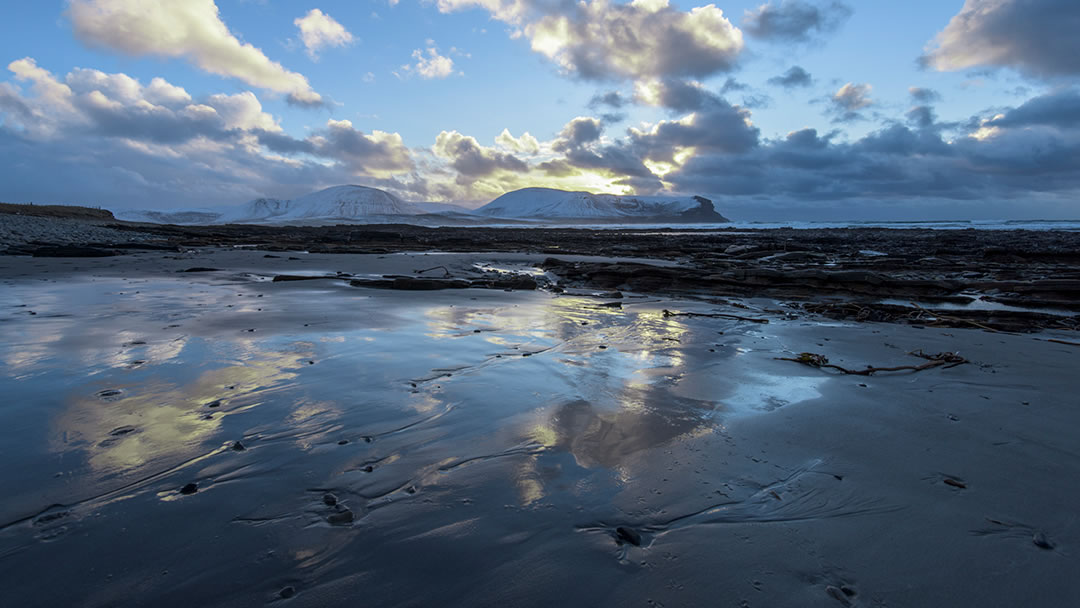
January in Orkney – Dramatic winter walks with a camera and The Ba
January is a scenic time of year to be in Orkney. Whilst it is one of the wettest and windiest months of the year, there are some exhilarating winter walks to undertake. Photographers will enjoy capturing the dramatic weather and winter light. There are also opportunities to see undisturbed birdlife such as Skylark, Twite, Lapwing and Golden Plover in the fields and Goldeneye, Eider ducks and Wigeon along the loch shore. Waterfowl find Orkney attractive in all seasons.
With regards events, New Year usually starts with a bang in Orkney. On the 1st of January, the streets of Kirkwall become overrun with men playing the New Year’s Day Ba.
This is a battle between two sides of the town; the Uppies and the Doonies, to gain control of a leather Ba’ by any means. The Ba’ is thrown into the crowd by an honoured Ba’ veteran or supporter on Broad Street, under St Magnus Cathedral. After many hours’ worth of struggle (the Ba’ can be held in a scrum for hours on end), the teams reach either the Uppies goal (Mackinson’s corner, opposite the Catholic Church) or the Doonies goal (the sea) with the Ba’ and the game is over.
During January there are Burns Night celebrations in community halls throughout the islands, and a last chance to see the festive art exhibitions in Orkney galleries, which showcase work from the best of Orkney’s artists and makers.
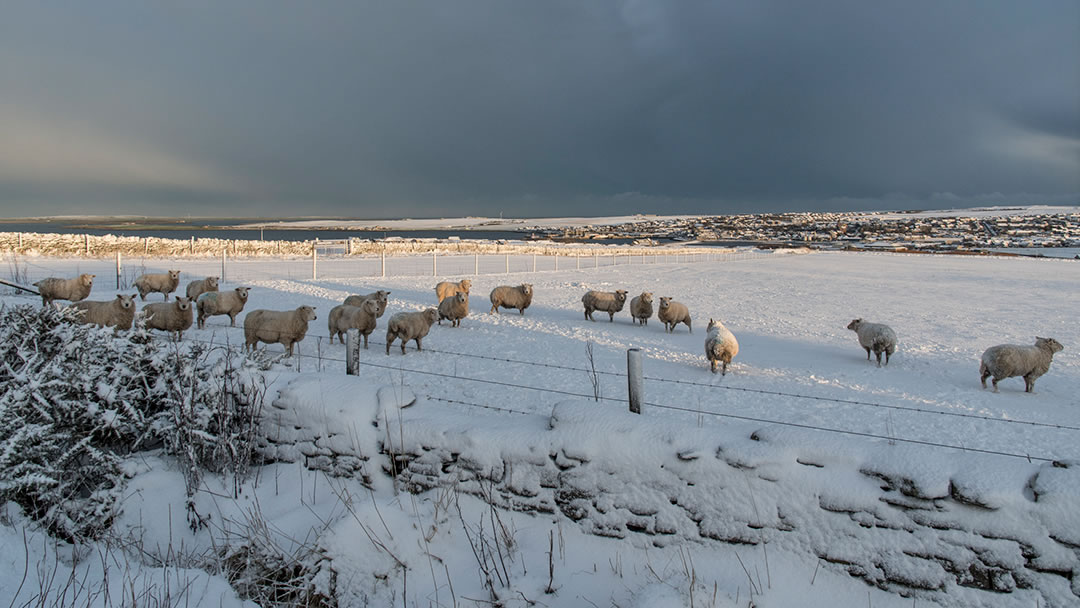
February in Orkney – Snowy winter walks, and indoor activities
In February there can sometimes be a few flurries of snow across the islands. These are usually short-lived though – a quick white outburst before it all melts away in the salt air.
When it is cold outside there is nothing nicer than a peaceful walk to restore some energy. Why not take a look at our Guide to Orkney for short walk ideas or choose one of Orkney’s hidden gems to visit?
Once a month, throughout the year, there is an Orkney Farmer’s Market. Why not head along to sample delicious food and drink?
February is also a good month to attend an interesting talk, go to a brilliant art exhibition or visit the Stromness Museum or the Orkney Museum to find out more about Orkney’s past.
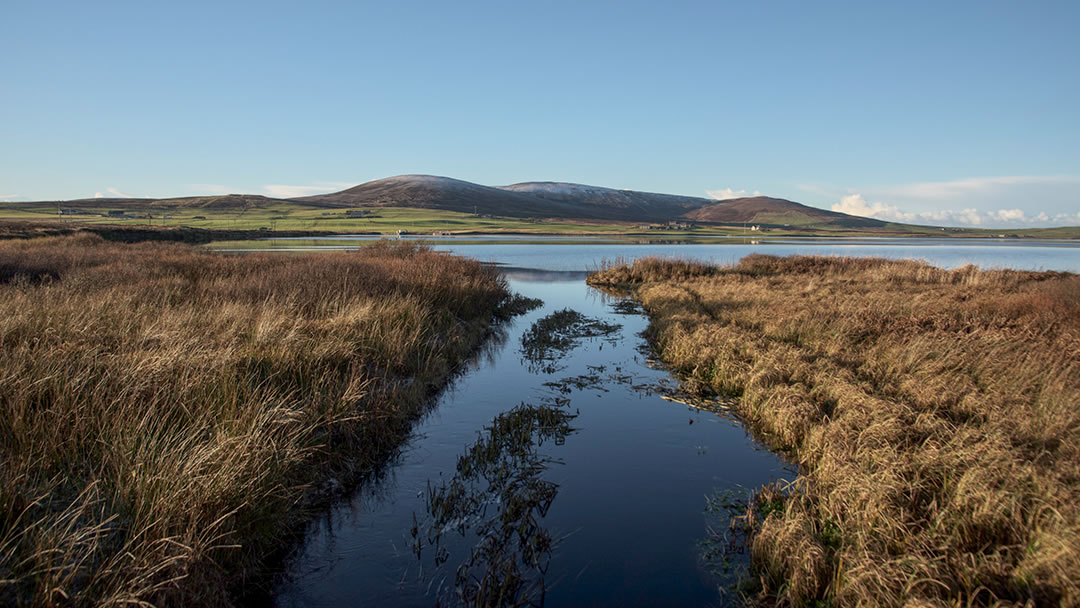
March in Orkney – Fresh air, daffodils and the first lambs
Spring was the Orcadian poet George Mackay Brown‘s favourite time of year. It’s easy to see why, the winter ebbs away as the month of March progresses. Bright daffodils fill the roadside verges, and the first lambs appear in the fields.
In the wilder parts of Orkney, Hen Harriers patrol the skies and waterfowl glide across the lochans.
Though March usually starts with blashy (wet and blowy) weather, the winds eventually become a little gentler and less chilly.
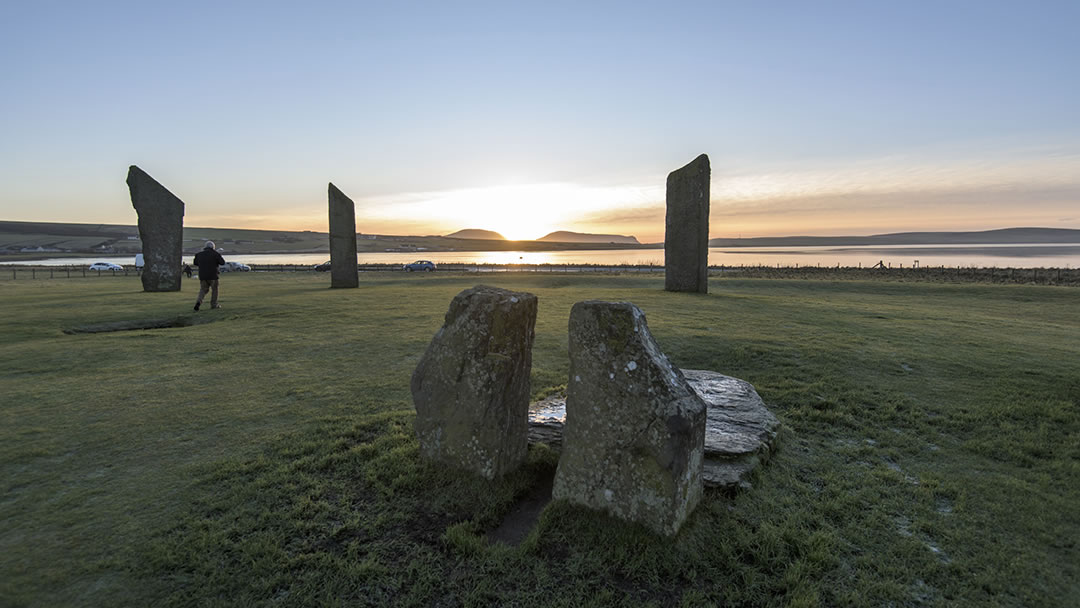
April in Orkney – Visitor attractions open and seabirds return
As the weather improves in Orkney and the days lengthen during April, the natural beauty of the islands comes to the forefront.
Seabirds return to the cliffs and wildflowers appear along the roadside. Hen Harriers skydance over the moorland. This is the rare bird of prey’s magnificent courtship dance! The summer soundtrack in Orkney – Curlew and Oystercatcher calls – can now be heard.
Though Orkney’s most popular visitor attractions (Skara Brae, the Ring of Brodgar, Maeshowe, St Magnus Cathedral and the Italian Chapel) are open all year round, those visitor attractions which close over the winter (the Broch of Gurness and the Bishop’s and Earl’s Palaces, amongst others) usually open during April.
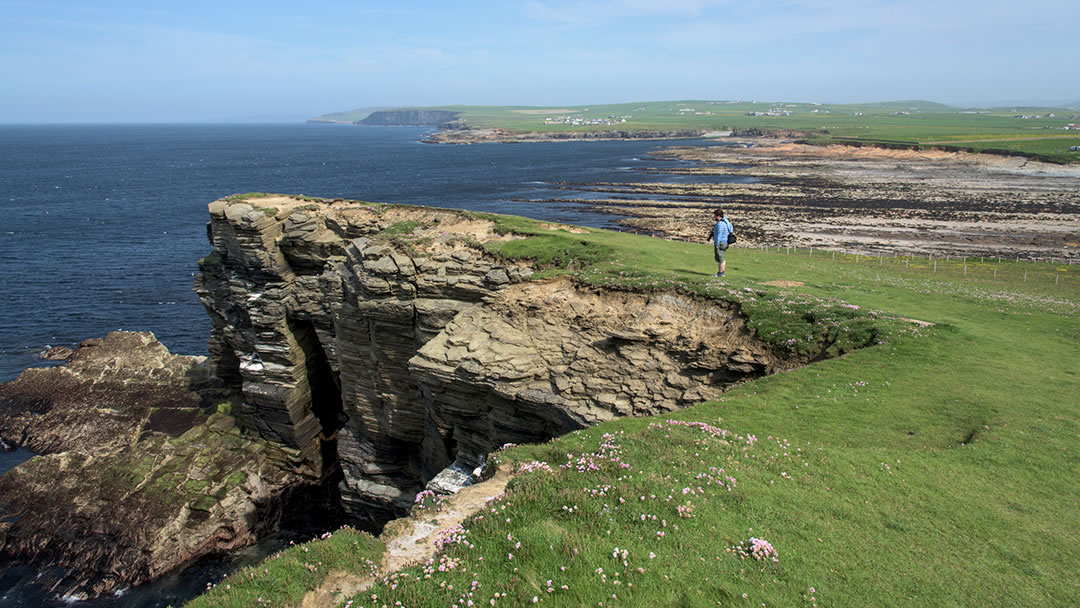
May in Orkney – Warmth, music, and wildflowers
May is always a wonderful month in Orkney. The weather is that bit warmer and the breeze is much gentler. The main influx of visitors has yet to arrive. The seabird cliffs team with Fulmer, Razorbill, and Puffins, and the landscape is green and colourful with flowers. May is the best time to find the rare flower Primula Scotica on Orkney’s cliffs.
Some of Orkney’s best festivals take place in May. During the Orkney Folk Festival there are superb concerts to attend, and the streets and pubs become lively with traditional music. The Orkney Nature Festival celebrates wild Orkney with a range of fun activities for all the family.
In May Orkney celebrates its close ties with Norway. For 500 years the Northern Isles were ruled by Norse Earls. On Norwegian Constitution Day Islanders welcome Norwegian visitors dressed in traditional outfits for a service and concert in St Magnus Cathedral.
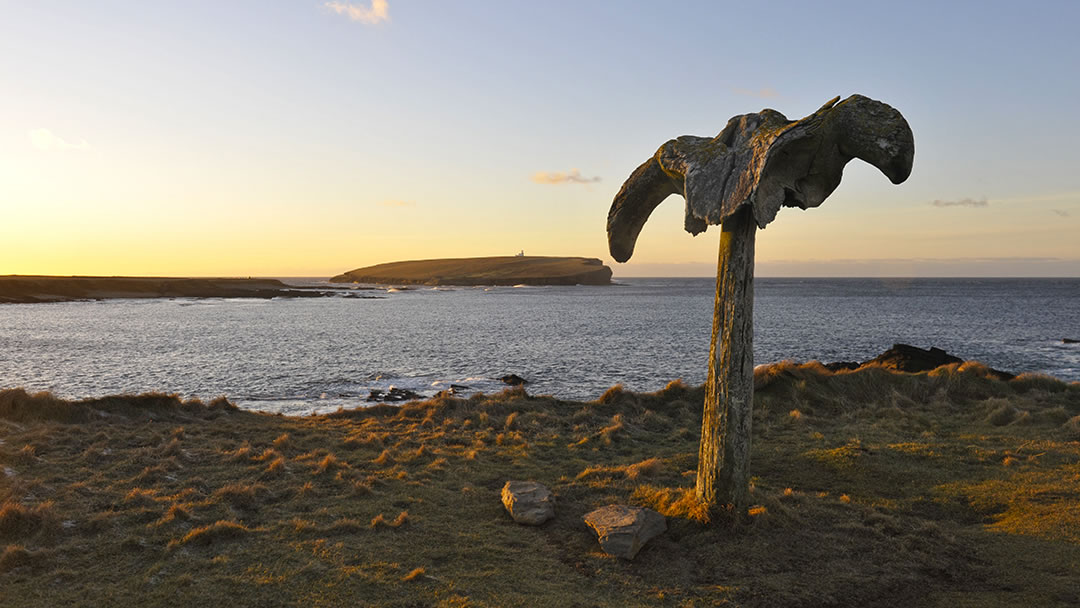
June in Orkney – When the sun barely sets at Midsummer
As midsummer approaches and the days become longer, Orkney is a very special place to be. The warm summer air echoes with bird calls and the sea glitters brightly. We would recommend a visit to a beach, a walk along the cliffs to see the seabirds, or a visit to the Ring of Brodgar on the Summer Solstice.
On the longest day, the sun sets at 21.30 and rises at 03.00. At this time of year, with the glow of the sun lingering just under the horizon, it never really gets dark. This magical light is known as Simmer Dim in Shetland and the Grimlins in Orkney.
The St Magnus International Festival takes place at Midsummer, and it is a festival of the arts, which brings world-class theatre and music to the inspiring landscape of Orkney.
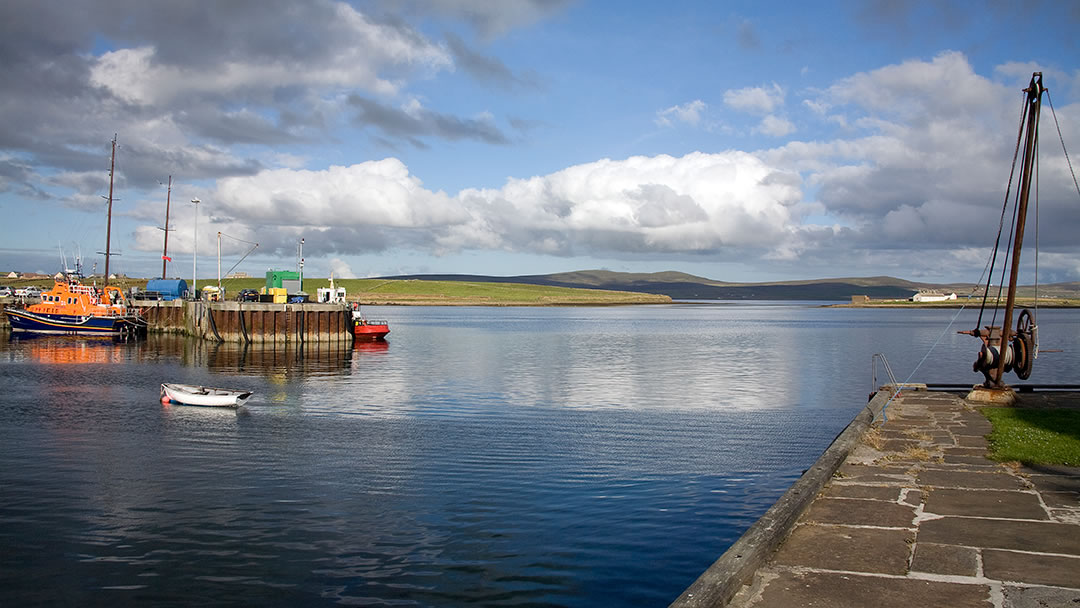
July in Orkney – Enjoying Orkney’s outdoor attractions in the sun
July is a very fine month to be in Orkney. Most of Orkney’s attractions like Skara Brae, and the Ring of Brodgar are outdoors, so the sunny weather that comes with July is welcomed. The farm museums at Corrigall and Kirbuster are best visited when the weather is fine.
As with all months of the year there is variable maritime weather, so be prepared for a dister (a light shower) of rain, but also pack sunscreen. It can be warmer in the north than you might think, and the cooling effect of the wind can be deceptive!
During July the Ness of Brodgar dig continues in Stenness, and Stromness Shopping Week is a bright gala week in the lovely waterfront town. Short eared owls can be spotted on fenceposts, taking a break from hunting Orkney voles.
Why not take a visit to the beach at Birsay to look for groatie buckies or hunt for hermit crabs in the rockpools?
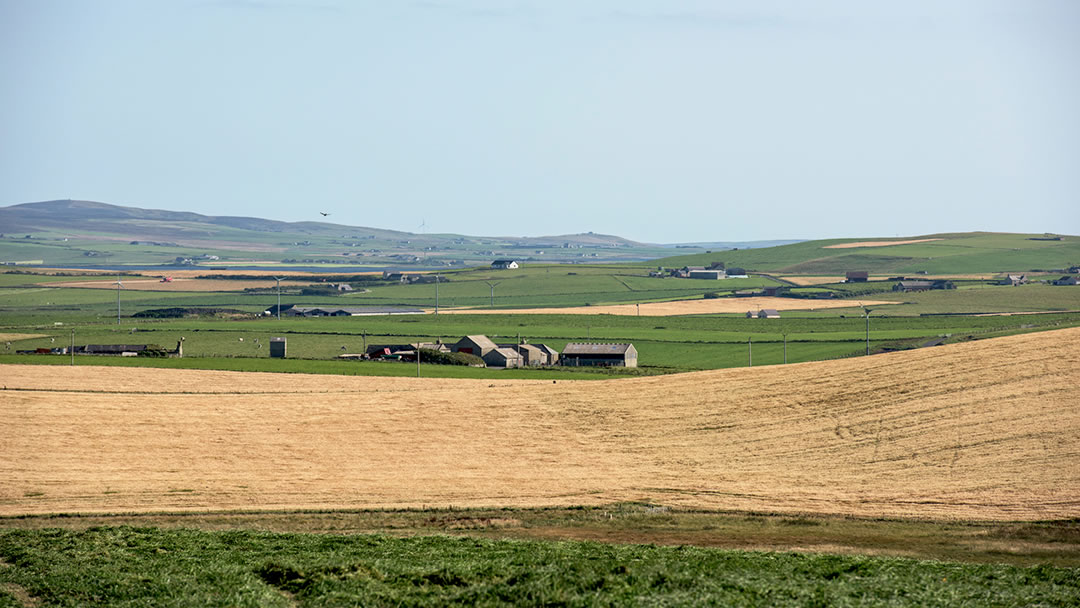
August in Orkney – Golden days, yellow fields, and agricultural shows
Some of Orkney’s finest days can be found in August. Across the islands there are quiet beaches, yellow fields swaying in the wind, bird calls in the air and a baking sun.
Orkney’s main industry is farming; it provides employment for a quarter of the workforce in the islands. The agricultural shows in August are the high points of the farming year. Orkney most handsome cattle, sheep and poultry are on display, and there are fairground rides, horse-riding competitions, sheep dog trials, and vendors selling crafts and delicious Orkney food and drink!
Also, in August in Kirkwall there is the Riding of the Marches (a horse-riding procession) and in South Ronaldsay the Festival of the Horse and the Boys Ploughing Match (where children dress up as horses!)
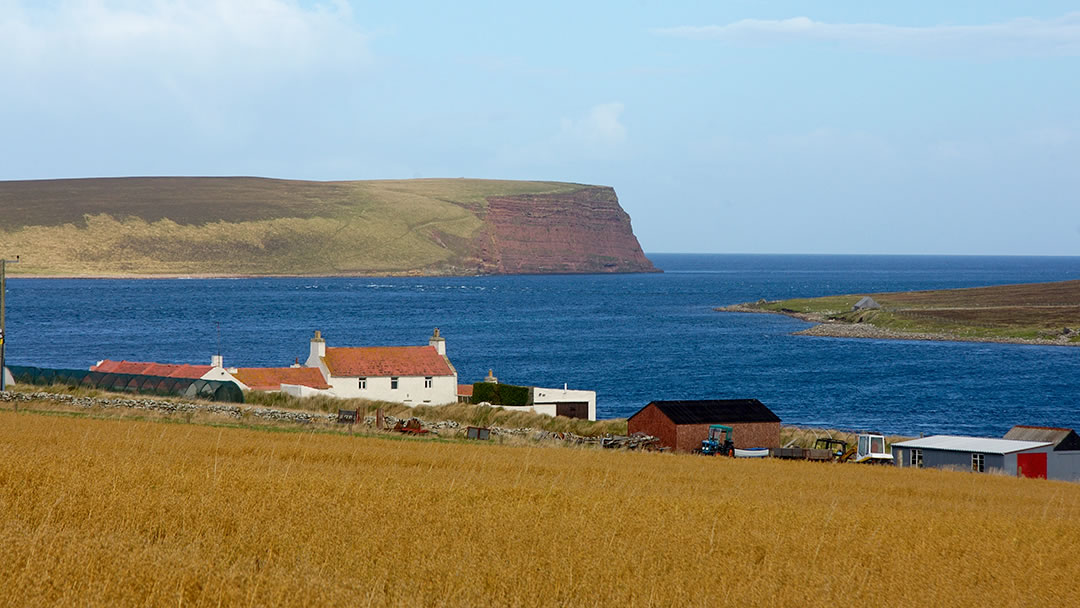
September in Orkney – Fresher winds, peedie summer, and migrating birds
September can be a super month to visit Orkney. In recent years Greylag and Pink Footed Geese have begun over-wintering in the islands. Hearing their distinctive calls marks the start of autumn.
During September the weather becomes noticeably colder and the wind a little stronger. However, there can be a ‘peedie summer’ in September, which brings beautiful weather to the islands for a spell.
Migrating birds often make landfall in Orkney as they make their way to the sun. There is sometimes a flurry of excitement when rare birds appear.
The Orkney International Science Festival melds Orkney’s environment and history with scientific insights, and the Orkney Blues Festival is a friendly and fun musical weekend – both take place in September.
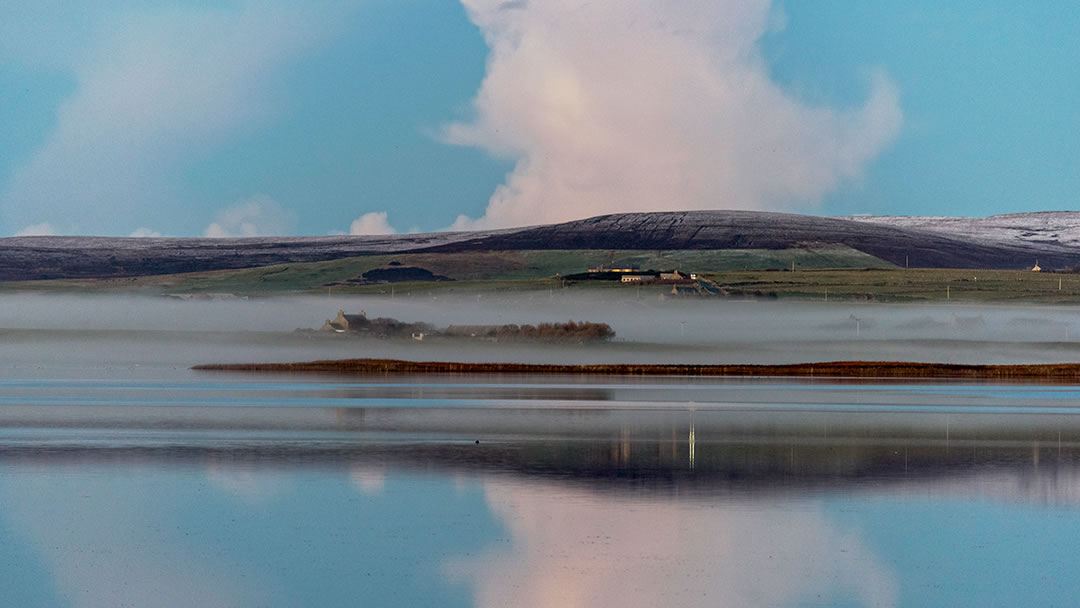
October in Orkney – Seal pups, Storytelling and Museums
For those keen to see a quieter side of the islands, the darkening days of October are a nice time to be in Orkney. Grey Seals appreciate peace and quiet too. Though seals can be spotted in the sea around the islands all year round, in the winter months, Grey Seals come ashore on secluded Orkney beaches to give birth to fluffy white seal pups.
We would recommend finding a beach overlooked by a grassy cliff – there are several in South Ronaldsay. From the clifftop you can find a comfortable spot to watch grey seals through binoculars or a zoom lens. Please don’t get too close to the pups and their mothers as this distresses them. Be careful on cliff edges, wrap up warm, and take as many photos as you can!
Interestingly, Common Seals give birth in June and July, but most Common Seal pups shed their fluffy coat in the uterus before they are born. This makes them harder to spot as they look like adult seals, only smaller!
Winter was traditionally a time when folk told stories around the fire as the wind whistled outside. So, it is appropriate that the Orkney Storytelling Festival takes place during October.
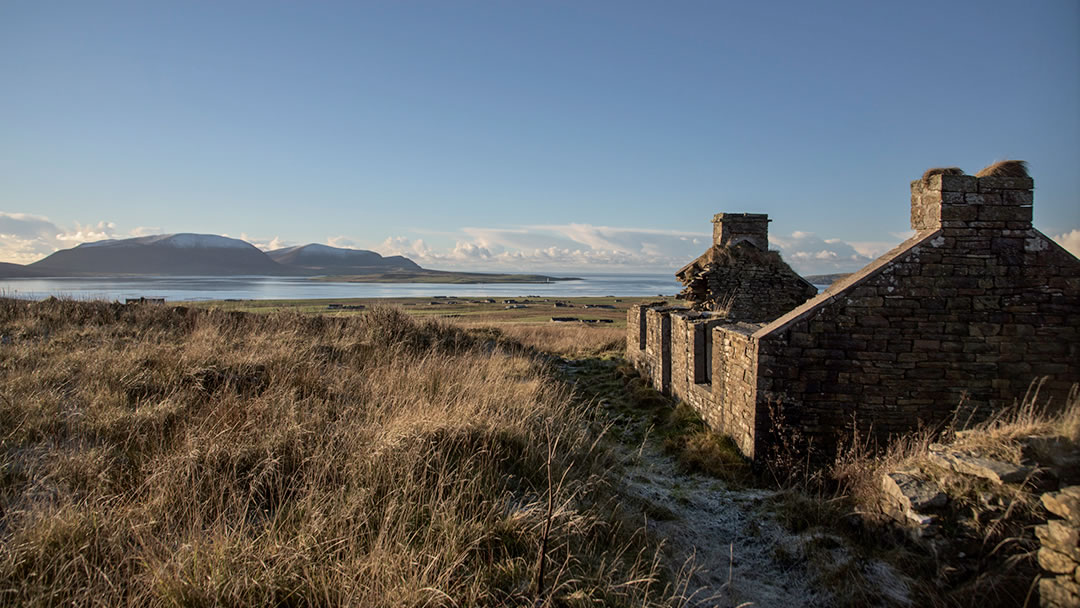
November in Orkney – Storms, shopping, and the Northern Lights
During the long cold winter nights there is a chance to see the Northern Lights, known in Orkney as the Merrie Dancers, when the sky is clear. November can be a wild month though. We’d recommend staying in your house when the windows are battered by an artillery of hailstones or the roof tiles rattle as a black storm rages outside.
However, for photographers, the dramatic weather and light can produce captivating results. As winter draws in and fewer visitors venture north this is a great time to visit as you will have Orkney’s attractions all to yourself!
Christmas art exhibitions begin in November. Many talented folk are inspired by the Northern Isles. Why not attend a Christmas craft fair to pick up a gift that’s a peedie bit different?
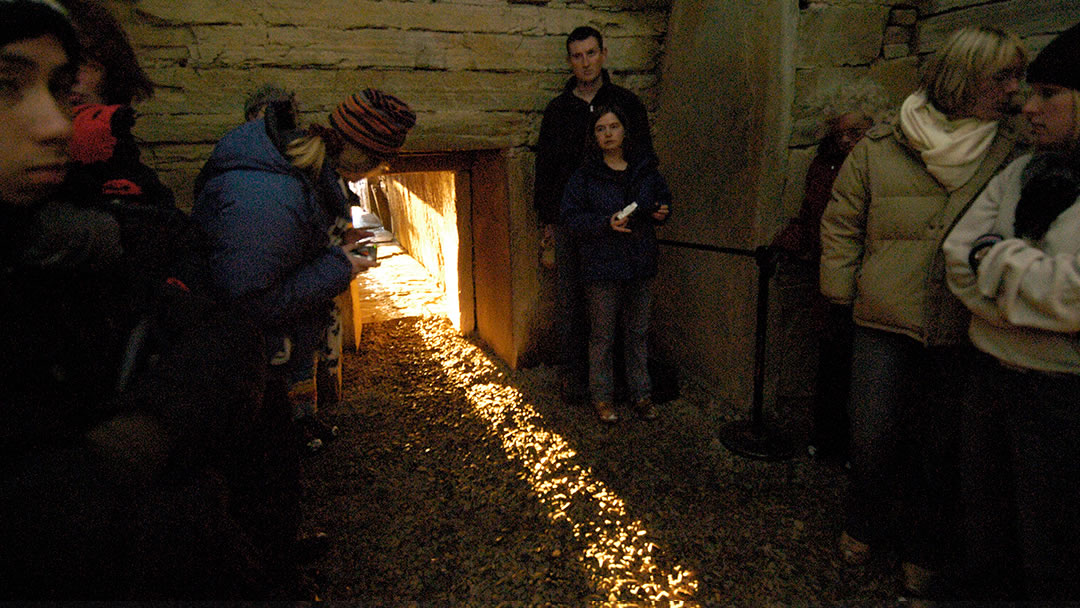
December in Orkney – Winter solstice, dark and cozy nights, and Christmas time
December in Orkney can be dark. The sun is low; only rising above the horizon for 6 hours a day. On the Winter Solstice the sun rises at 09.05 and sets at 15.10.
There are plenty of toasty places to go however, and festive events to enjoy in the lead up to Christmas and the New Year. These include festive tree lightings and Christmas shows infused with a warm Orcadian sense of humour.
Winter Solstice is a special time to visit the Neolithic burial chamber, Maeshowe in Stenness. It was built so that the last ray of the setting winter sun would shine down the long passage and linger briefly near one of the tombs.
On Christmas Day the boys Ba’ and men’s Ba’ is played in Kirkwall as it is on New Year’s Day also. If you plan to view or take photos of the traditional game, be prepared to move quickly if the Ba’ gets too close!
A very special way to see in the New Year is to join in the celebration at the Pier Head in Stromness and under St Magnus Cathedral in Kirkwall.
 By Magnus Dixon
By Magnus DixonOrkney and Shetland enthusiast, family man, loves walks, likes animals, terrible at sports, dire taste in music, adores audiobooks and films, eats a little too much for his own good.
Pin it!